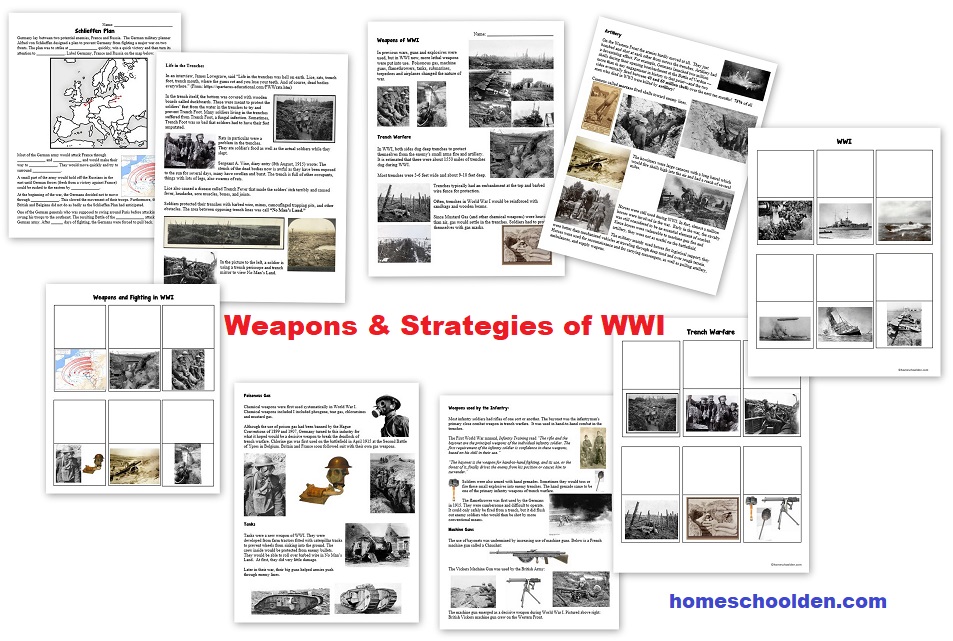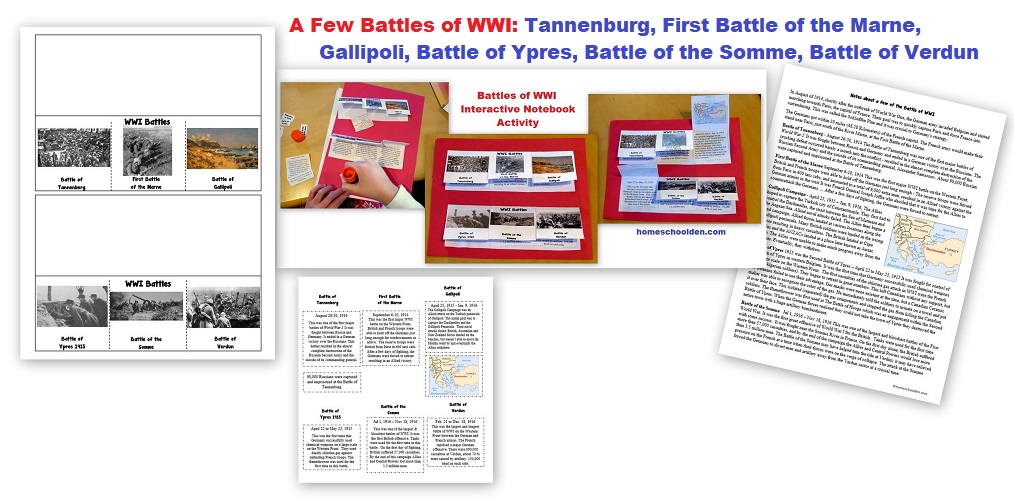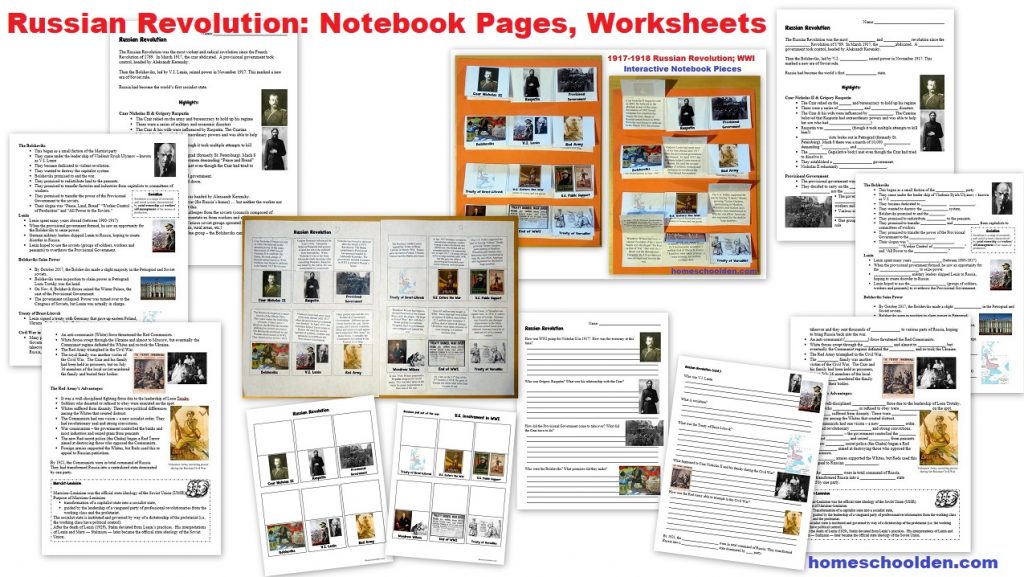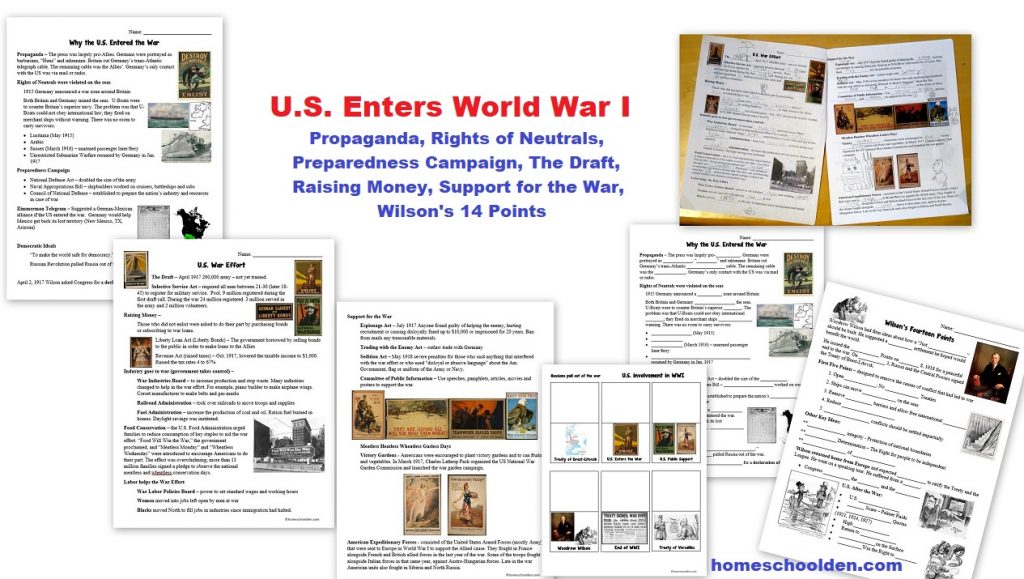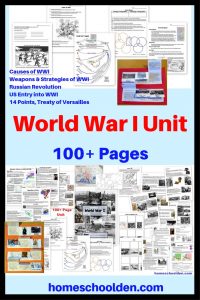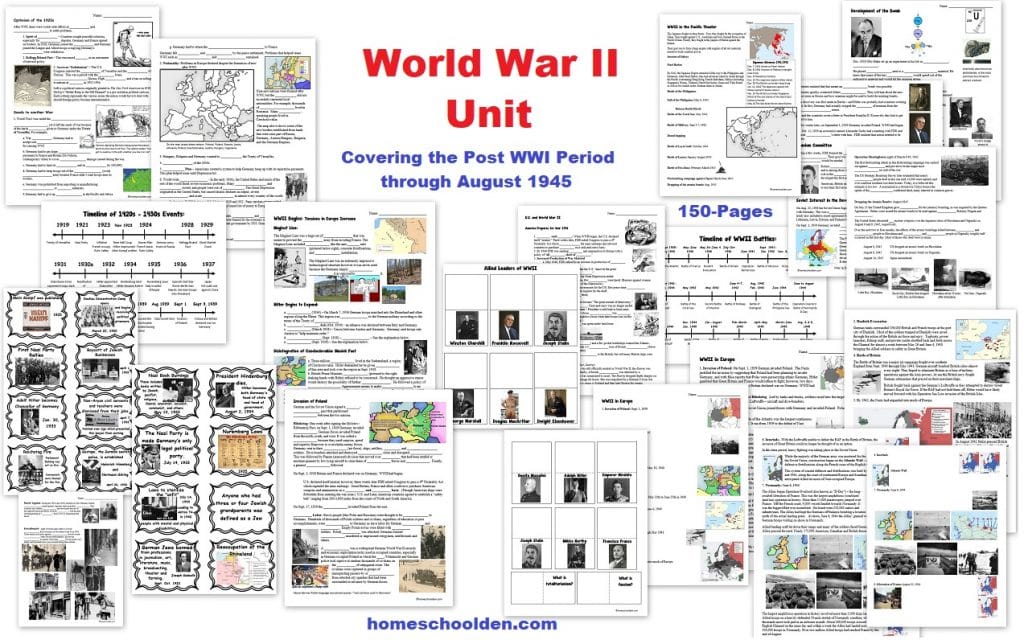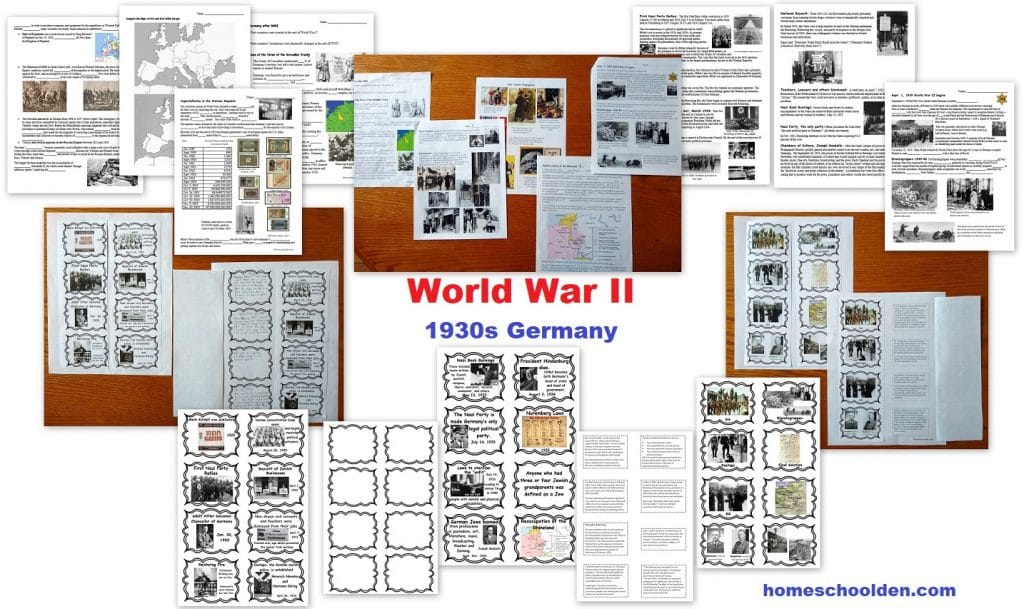World War I Unit
100+ Page World War I Packet
We have just finished our huge study of World War I and I am finally ready to share this 100+page WWI unit with you!
Our World War I Unit starts with a study of imperialism and nationalism, dives into the causes of World War I with a close look at militarism, territorial disputes, and the complicated secret alliances of this period. We talked about the Triple Alliance and the Triple Entente… and did a lot of map work in connection to all of those themes (imperialism, nationalism, and the military alliances prior to WWI).
Once we covered the causes of WWI, we took a look at some of the key battles and spent time looking at the weapons and strategies used in WWI. We spent quite a bit of time talking about the complicated events of 1917 — the Russian Revolution and the U.S. entering the war. We spent time on the U.S. war effort and Woodrow Wilson’s efforts for world peace with his 14 Points. We spent a couple of days wrapping up the WWI unit by talking about the Treaty of Versailles, the results of the war, and the new map of Europe.
We did this unit with my kids who are (almost) 11, 13 and 15. Because of the complexity of the topic, I would say this unit is best for upper middle school and high school. (In fact, some of this material is from when I taught AP history and history on the college level.) My youngest definitely thought parts of the unit were hard (because it touches on topics like political alliances/socialism/communism and has confusing vocabulary at times (reparation payments!). That said, I added in some interactive notebook pieces and various map activities that kept her engaged, but I would recommend this more for older students (closer to the ages of my 13 and 15 year olds or older).
I’ll go into more depth down below, but the kinds of materials in this unit includes: teacher notes and student fill-in-the-blank notebook pages; map work (specifically on imperialism, pre-WWI military alliances, post WWI Europe); some interactive notebook pages.
Now, onto the topics and types of materials in this World War I Packet:
In order to understand how tensions that developed in Europe resulted in a WORLD war, students have to have some understanding of some key concepts: imperialism and nationalism.
Before jumping into World War I, we spent quite a bit of time talking about imperialism. We talked in depth about British imperialism and the growth of the British Empire – in particular their take-over of India and Egypt/the Suez Canal. We watched a Passage to India (though it is set after WWI, the themes this movie explores fits in perfectly with our unit). We talked to a lesser extent about Africa and the Scramble for Africa, though if you have the time there are fabulous resources for exploring that topic.
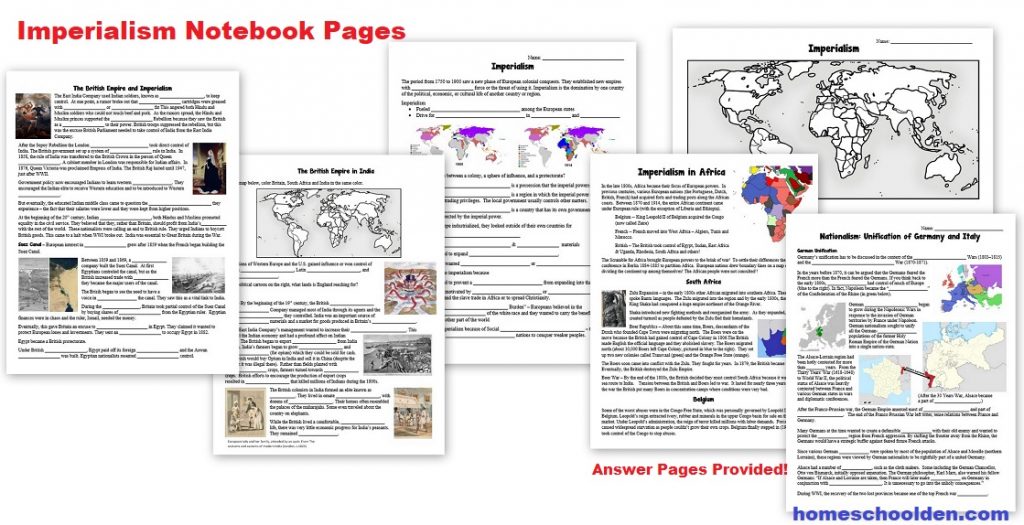
We spent time talking about the different nationalities in the Austro-Hungarian empire and filled out maps (over and over) – just to make sure they kids really understood the tensions that were building (against outside control of empires such as the Ottoman Empire or the Austro-Hungarian empire).
Causes of World War I: From there, we looked at the way WWI broke out. We took quite a bit of time filling out the WWI chart (starting with Bosnia/the assassination of Archduke Ferdinand)… and then the other countries being pulled in one by one for one reason or another.

- cavalry… and airplanes
- swords… and long-range artillery
- fife and drums… and machine guns
- passenger liners… and U-boats
In this section there are note pages about the various weapons and strategies of WWI… This section touches on topics from trench warfare, artillery fire, grenades, and poison gas to zeppelins, submarines and aircraft. There are some interactive notebook pieces provided. Students can either cut these pieces out and write on the inside flaps or they can take notes directly on the page (without cutting the pieces out). Your student/s can do extra research, but there is information provided about the main topics in this section.
We read All Quiet on the Western Front (affiliate link) as we did this unit. My kids thought this book was really good. It is a powerful book and if you have the time, I highly recommend it … with the caveat that it is a war novel, so not for sensitive kids! There are no specific pages in this packet about the novel, but it gave the kids incredible insight into trench warfare and the horrors/struggles soldiers faced.
Battles of WWI: The loss of life was staggering. At the opening of the war, on August 22, 2014 27,000 French soldiers were killed in just one day of fighting near the Belgian and French borders in what has become known as the Battle of the Frontiers. In our unit, we did not go into detail about military strategy and the military battles of WWI. We touched on just six battles in this unit:
- Battle of Tannenberg – one of the first major battles of World War I. It was fought between Russia and Germany and ended in a German victory over the Russians.
- First Battle of the Marne — This was the first major WWI battle on the Western Front. British and French troops were able to hold off the Germans just long enough. The Germans were forced to retreat.
- Gallipoli Campaign – The Allies hoped to capture the Turkish city of Constantinople. They first had to control the Dardanelles, the strait between the Sea of Marmara and the Aegean Sea. Allied naval attacks failed. The Allies then began a land campaign. Allied forces landed at various locations along the Gallipoli peninsula. The Allies were unable to make much progress away from the beaches. Eventually, they withdrew.
- Battle of Ypres 1915 was the Second Battle of Ypres – April 22 to May 25, 1915 It was fought for control of the town of Ypres in western Belgium. It was the first time that Germany successfully used chemical weapons on a large scale on the Western Front.
- Battle of the Somme This was one of the largest and bloodiest battles of the First World War. It was the first great offensive of World War I for the British. Tanks were used for the first time with some success. It was fought near the Somme River in France.
- Battle of Verdun – This was the largest and longest battle of the First World War on the Western Front between the German and French armies – French repulsed a major German offensive – It included some of World War I’s most devastating uses of artillery. – 800,000 casualties at Verdun, about 70 percent were caused by artillery.
There are some teacher’s notes provided for this section as well.
Russian Revolution: WWI caused an incredible loss of life and led to political instability in Russia. We talked about the Russian Revolution and the Treaty of Brest-Litovsk which took Russia out of the war.
U.S. Enters WWI: We also spent time talking about why the U.S. entered the war and how the public was mobilized quickly to support the war effort. We touched on topics such as propaganda, the rights of neutrals (and unrestricted submarine warfare), the Preparedness Campaign – Wheatless, Heatless, Meatless and Gasless Days, the Draft, Raising Money (War Bonds), Wilsons 14 Points and so forth. Again, in this section there are teacher notes, fill-in-the-blank student notes, and some interactive notebook pages.
Results of WWI: In all over 65 million men fought in WWI. Over half were killed or wounded This was sometimes called, “The War to End All Wars,” but it actually left a lasting legacy of tension and bitterness. In fact, the harsh terms of the Treaty of Versailles which ended WWI left Germany with a strong desire for revenge. In this final section, we talked about some of the results of WWI and spent time on the post-WWI map of Europe.
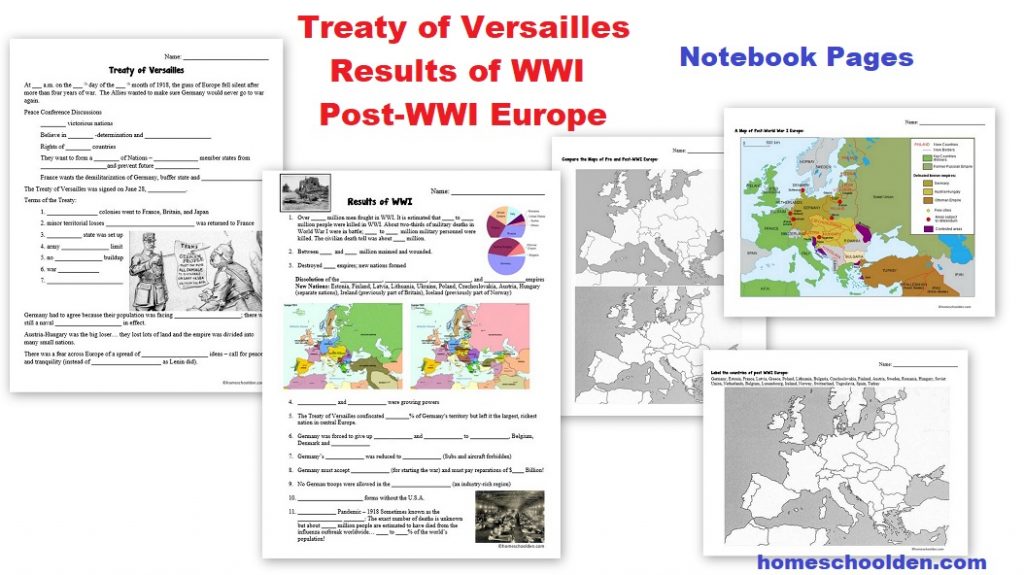
What age is this WWI Unit for? We did this World War I unit with my kids who are (almost) 11, 13 and 15. Because of the complexity of the topic, I would say this unit is best for upper middle school and high school. (In fact, some of this material is from when I taught AP history and history on the college level.) My youngest definitely thought parts of the unit were hard (because it touches on topics like socialism/communism and has confusing vocabulary at times (reparation payments!). That said, I added in some interactive notebook pieces and various map activities that kept her engaged, but I would recommend this more for older students (closer to the ages of my 13 and 15 year olds).
Do I need a special book or textbook with this unit? A question I’m often asked regarding our units: Do I need to buy a specific textbook or book to go with these units? No, these units are meant to supplement whatever curriculum or textbook (or books from the library) you choose. There are extensive notes provided, so you do not have to do extra research in order to use this resource. The teacher notes provided can be read together with your student/s or you can read over the teacher notes while your students use fill-in-the-blank type pages that accompany them. For the interactive notebook pages, students can use the cut-and-paste notes provided or can do research and write in their own answers.
The WWI Packet is $9.99 This is a PDF download.
Once your payment is processed, you will get an email from SendOwl, the delivery service I use, to your PayPal email address. Remember, you can always opt to pay with a debit or credit card (see how). If you have any questions or issues with your order (or if you need the download link sent to another email address), be sure to reach out to me – Liesl at homeschoolden dot com.
WWI Packet
$9.99
Don’t forget to check your PayPal email address for the download link!
I know a number of you have asked about the next packets… I have just released the WWII Packet. You can find out more about the World War II unit here or in Our Store.
$9.99 World War II Unit (150 pages) from the post WWI period through Aug. 1945. Visit the post. View image 1, image 2, image 3, image 4, image 5, image 6, image 7.
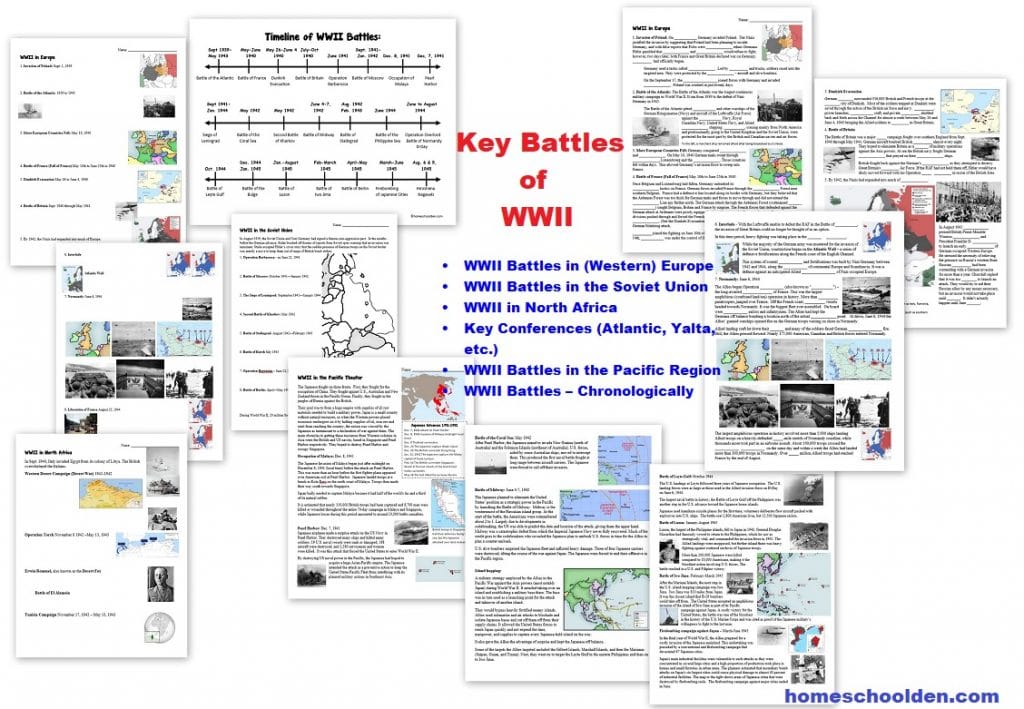

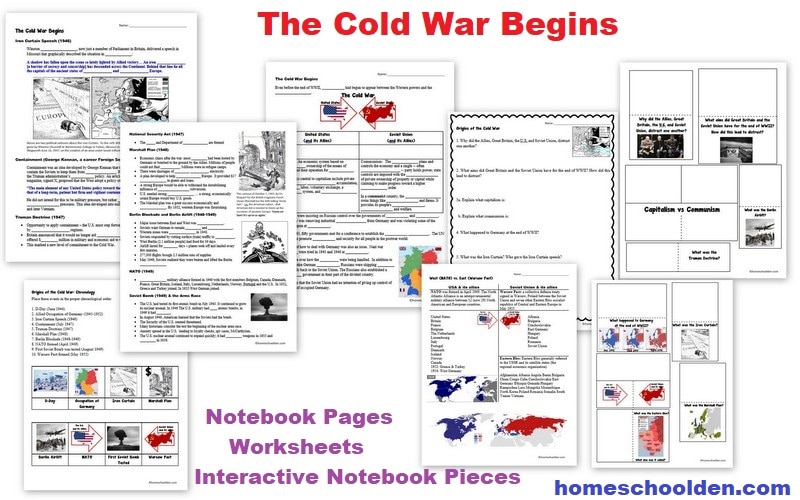
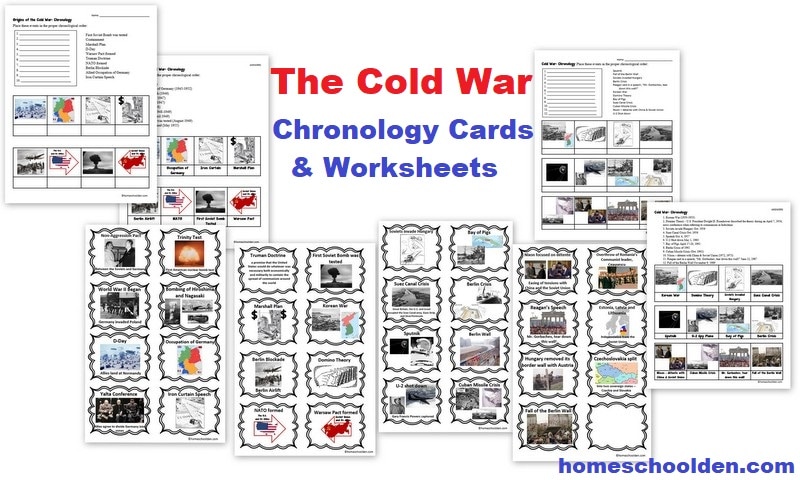
Vietnam War Packet – Coming Soon!
Feel free to email me if you want access to these! ~Liesl
See you again soon here or over at our Homeschool Den Facebook Page! Don’t forget to Subscribe to our Homeschool Den Newsletter. You might also want to check out some of our resources pages above (such as our Science, Language Arts, or History Units Resource Pages) which have links to dozens of posts. Don’t forget to check out Our Store as well. ~Liesl
Again, if you are interested in joining our Homeschool Den Newsletter, feel free to subscribe here. It’s a great way to hear about our latest packets and to learn about many of the hundreds of printables & other materials we have tucked away on the blog!
Happy Homeschooling! ~Liesl
To find out more about our Privacy Policy, click here.
Disclosure: Please note that some of the links in this post are affiliate links, and at no additional cost to you, I will earn a commission if you decide to make a purchase.


